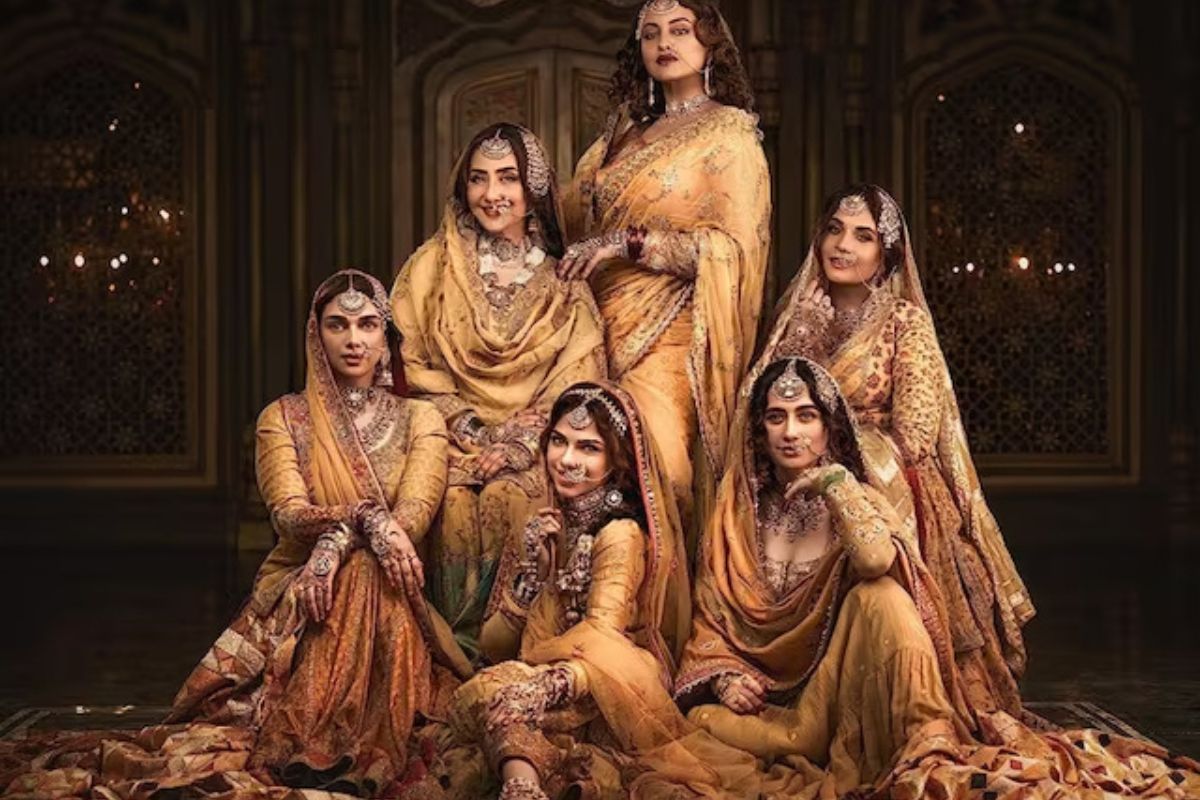Ranbir Kapoor and Vicky Kaushal to lock horns in ‘Love and War’: Report
As per reports, Bhansali's 'Love and War' will feature a high-stakes face-off between Ranbir Kapoor and Vicky Kaushal.
Sanjay Leela Bhansali’s much-awaited OTT debut project finally materialised and premiered on Netflix on 1 May. Heeramandi, the period and prestige TV drama by the celebrated filmmaker, has been liberally bestrewed with opulence, baroque architecture, diamonds, intricate costumes, Urdu and Ittar.
AAKRITI AGARWALA | Kolkata | May 11, 2024 4:48 pm

Image Source: Instagram
Sanjay Leela Bhansali’s much-awaited OTT debut project finally materialised and premiered on Netflix on 1 May. Heeramandi, the period and prestige TV drama by the celebrated filmmaker, has been liberally bestrewed with opulence, baroque architecture, diamonds, intricate costumes, Urdu and Ittar. Everything that can add to the aesthetic spectacle of the 8-episode series has been added in abundance; the only thing that the series missed is a solid story.
The series is set up in pre-independence Lahore and follows three parallel storylines that intermingle from time to time. Following the lives of the regal tawaifs of Lahore, the series features the rivalry and tussle for power between arch-enemies Mallikajaan (Manisha Koirala) and Fareedan (Sonakshi Sinha). Fareedan has a personal vendetta against the tyrannical and so-called queen of Lahore, Mallikajaan, who is the matriarch of Shahi Mahal, and Fareedan’s sole purpose is to defeat her. Parallelly, the drama presents the love story of star-crossed lovers Alamzeb (Sharmin Segal) and Tajdar (Taha Shah), along with the freedom struggle against the British Raj.
Advertisement
While the extravagance and the musical performances make up the bulk of the series, which feels too forced after a while, the characters have been depicted on a very surface level, with little to no attention paid to their background stories, internal battles, or identity negotiation. The tawaifs in the show are shown to be either cunning ‘mean girls’ like Mallikjaan and Fareedan or pitiful as Alamzeb and Laajo (Richa Chadha), with Waheeda (Sanjeeda Sheikh) oscillating between the two. Alamzeb tries to break free of her bounds of blood and aspires to become a poetess instead of a tawaif, but soon the aim is forgotten when she is enamoured by the London-returned Taj. Her older sister, Bibbojaan (Aditi Rao Hydari), is a secret rebel against the British and a benefactor of anti-British movements. Almost all the characters are shown as primarily unidimensional, without any depth or complexities of character being explored.
Advertisement
The story keeps building up with no major progression for 6 episodes, and the freedom struggle feels like a background event with no debates on the partition of Lahore in 1945 or acknowledgement of any historical markers of pre-independence and pre-partition times. The only public view of the rebellion has been confined to handout posters and the people shouting “Inquilab Zindabad”. Further, the series makes a point to depict the correlation between the tawaifs’ fight against their destiny of being trapped in gold cages and the fight for independence from the colonisers. However, this interesting facet hasn’t been explored with any seriousness and remains a fleeting argument in the course of the show.
The plot points see hushed and unconvincing resolutions, with the ending sequence feeling more theatrical than momentous. The show is held together by Koirala, Sinha and Hydari, who admit a story that lacks gravitas. The series is a fine watch but may fall short of your expectations. Bhansali’s saga of the tawaif culture comes across as a glamourous love letter to them, with aesthetic finding priority over a deep and moving tale of the tawaifs of Lahore and how their rebellion against the colonisers shaped the freedom struggle, a story eliminated by official history.
Advertisement
As per reports, Bhansali's 'Love and War' will feature a high-stakes face-off between Ranbir Kapoor and Vicky Kaushal.
Priyanka Chopra's mother, Madhu Chopra breaks silence on Deepika Padukone replacing PeeCee in Bhansali's 'Ram Leela.'
In a previous interivew, Sanjay Leela Bhansali recalled his father being a violent man consumed by alcoholism.
Advertisement
